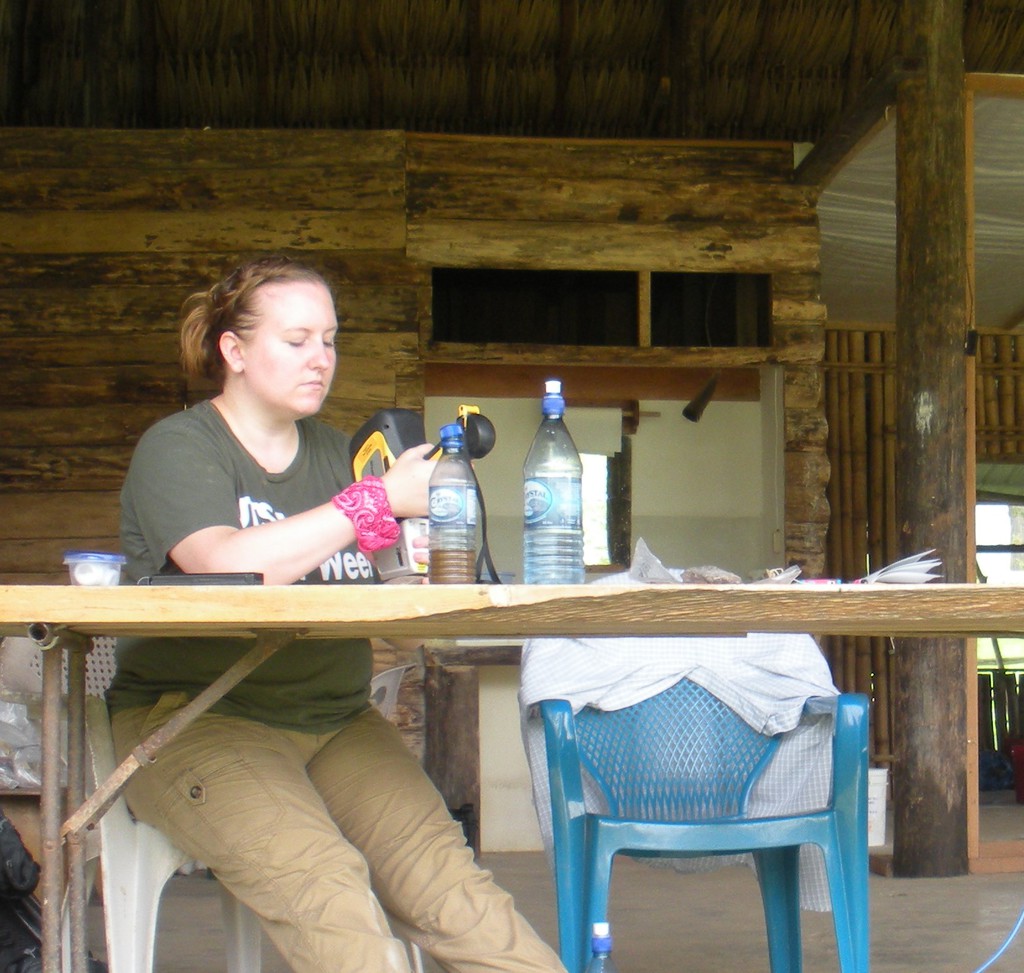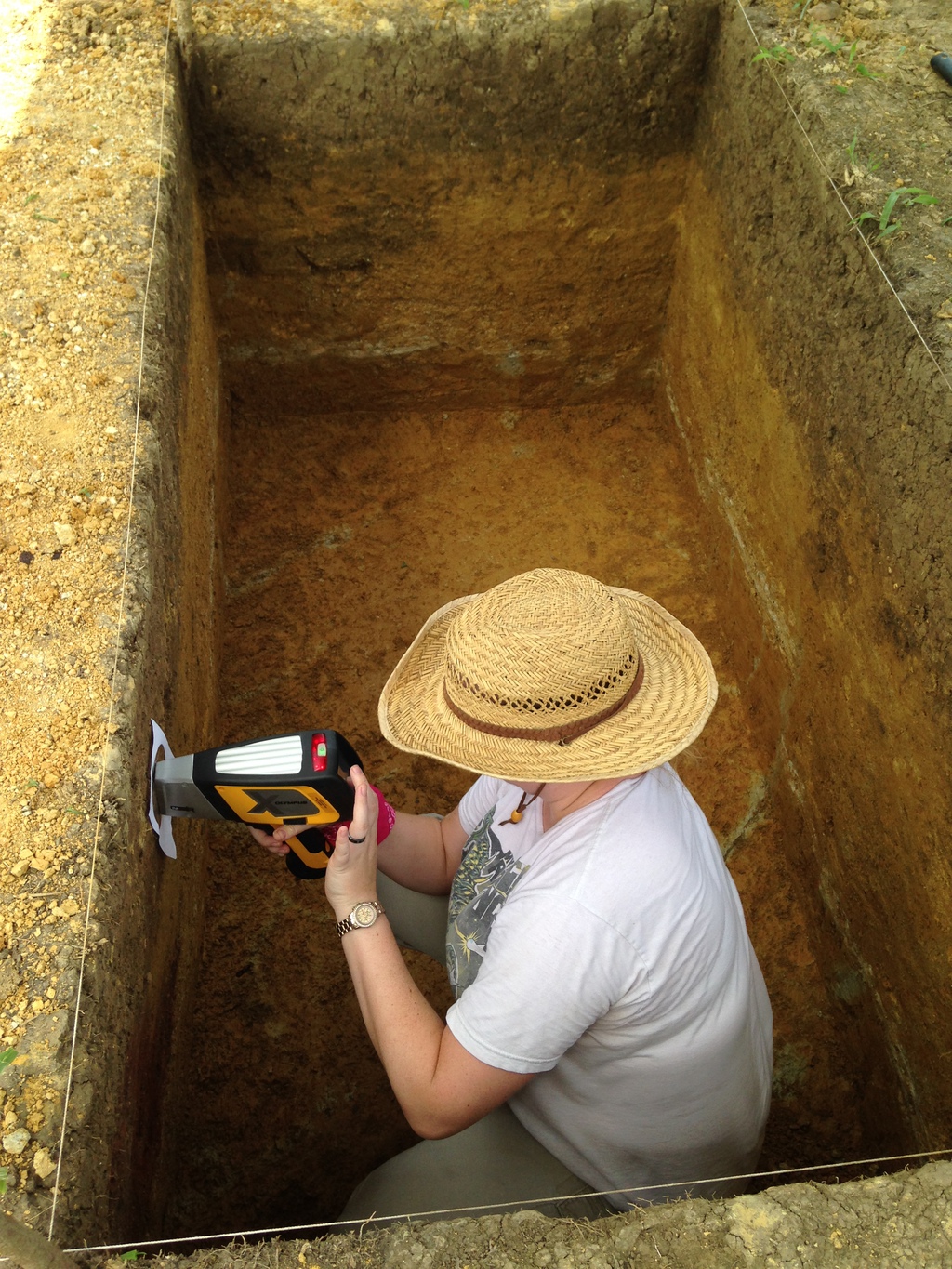Tibbits' research to be published

CHADRON – Chadron State College Assistant Professor Dr. Tawny Tibbits is a co-author of an article accepted for publication by Advances in Archaeological Science. The paper's lead author is Dr. Marieka Brouwer Burg from the University of Vermont, followed by Tibbits, and Dr. Eleanor Harrison-Buck from the University of New Hampshire. The article is titled Advances in Geochemical Sourcing of Granite Ground Stone: Ancient Maya Artifacts from the Middle Belize Valley.
Tibbits spent three field seasons collecting outcrop data for comparing archaeological data to match artifacts to where they likely formed.
The paper analyzes how ground stone tools, manos, and metates, can be analyzed to infer economic exchange routes and social connections. According to Tibbits, the Belize River East Archaeology permit area is an excellent region for studying how communities in Middle Belize River Valley used granite from more than one location for their ground stone tools. The area is just north of three different sources of granite: Mountain Pine Ridge, Hummingbird Ridge, and Cockscomb Basin.
During her doctoral research, Tibbits developed a method using a portable X-Ray fluorescence (pXRF) unit, which had previously been used mostly with obsidian, to assess the geochemistry of granite accurately.
"Granite from each site has a similar appearance, but the chemistry of each is distinct," said Tibbits, who is applying for grants to purchase a pXRF unit for CSC. "There is a slight visual difference. The granite from Mountain Pine Ridge tends to be a little more pink, but they are functionally the same. They're both hard granite granites. Mountain Pine Ridge seems to have been a really big a huge producer of monos and metates. It's the easiest to access. It’s not a formal quarry, but has many waterfalls and streambeds with exposed granite. Hummingbird and Cockscomb are more vegetated with dense jungle, so it's harder to access granite there.”
In the article's abstract, Tibbits and her colleagues write that ground stone tools were ubiquitous in the ancient Maya world. Their applications ranged from household tools to ceremonial equipment and beyond.
The article presents a small-scale application of pXRF for determining granite provenance. The method, developed by Tibbits, demonstrates successful and accurate geological characterizations can be made on granite ground stone tools.
Harrison-Buck is the primary investigator of the site, and as the archaeologist with the permits, she manages the Belize River East Archaeology (BREA) project.
"They were kind enough to let me come by during my Ph.D. work and let me analyze their granite ground stone tools. I was with them for about a week in their lab outside and going out to their excavations, analyzing whatever they dug up," Tibbits said. "I zapped the granite and compared it to the outcrops, and saw where the exchange seemed to have happened. It seems like this community was a bit more complex than some other places that only have Mountain Pine Ridge granite. It seems like they have different socio-economic ties than some other communities."
Brouwer Burg, Harrison-Buck, and Tibbits plan to continue to analyze granite sources to determine why the granite moved.
"You could move because you married someone and needed to move to their village and take your tools with you or it could be through traveling merchants," Tibbits said.
The three scientists plan to submit a poster to the Society for American Archaeology for consideration to be exhibited at its annual meeting March 30-April 3, 2022, in Chicago.
"We're hoping to get some valuable feedback there about what others are thinking these days. To see how others have been answering this question as well as get a nice share of ideas. It is really complicated to figure out the 'why' behind people moving things. We're just looking at one piece of the puzzle - where the rocks ended up compared to where they started. But there are stories from mountain to deposition. We're missing a lot."
—Tena L. Cook, Marketing Coordinator
Category: Campus News, Physical and Life Sciences


